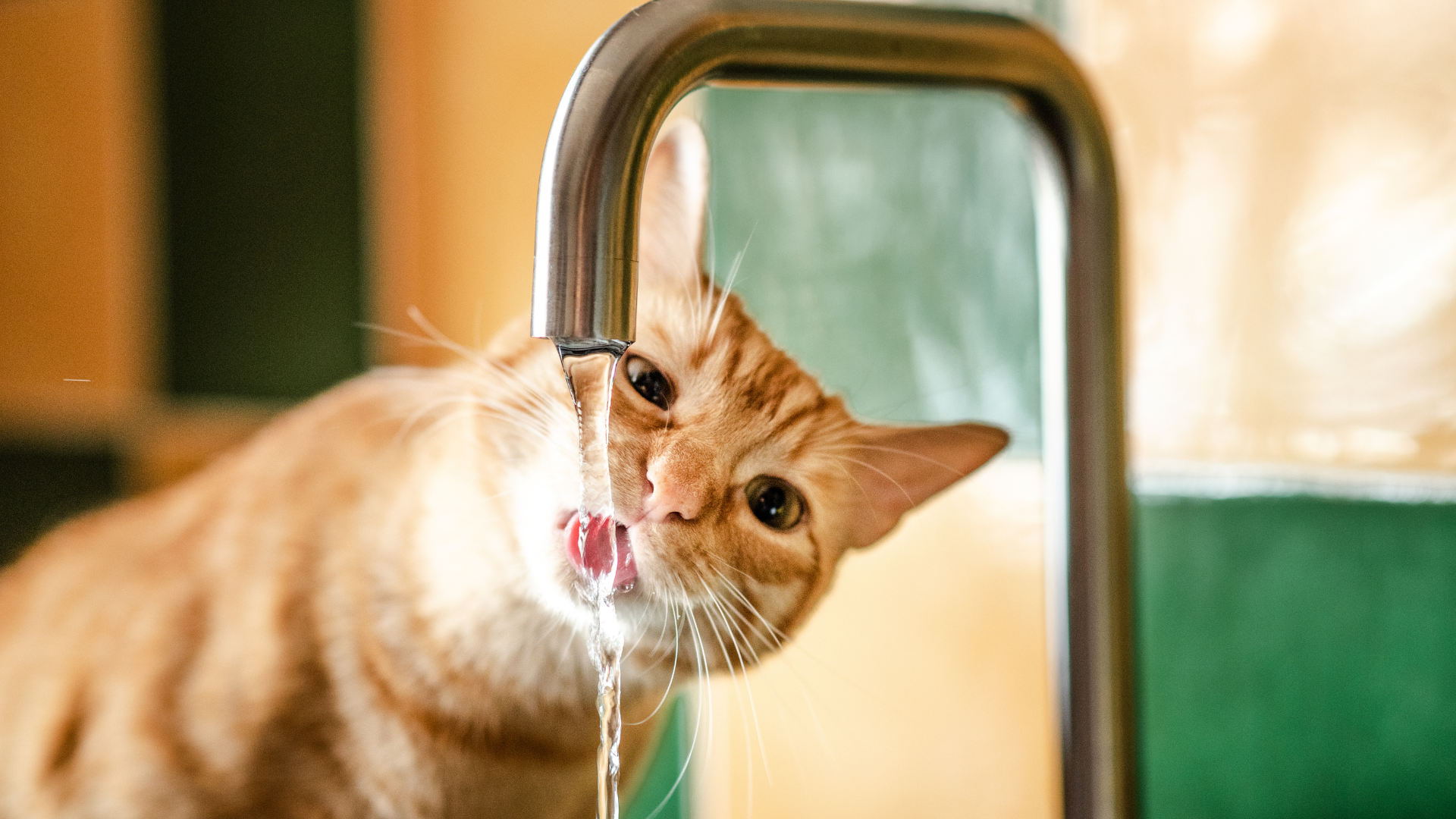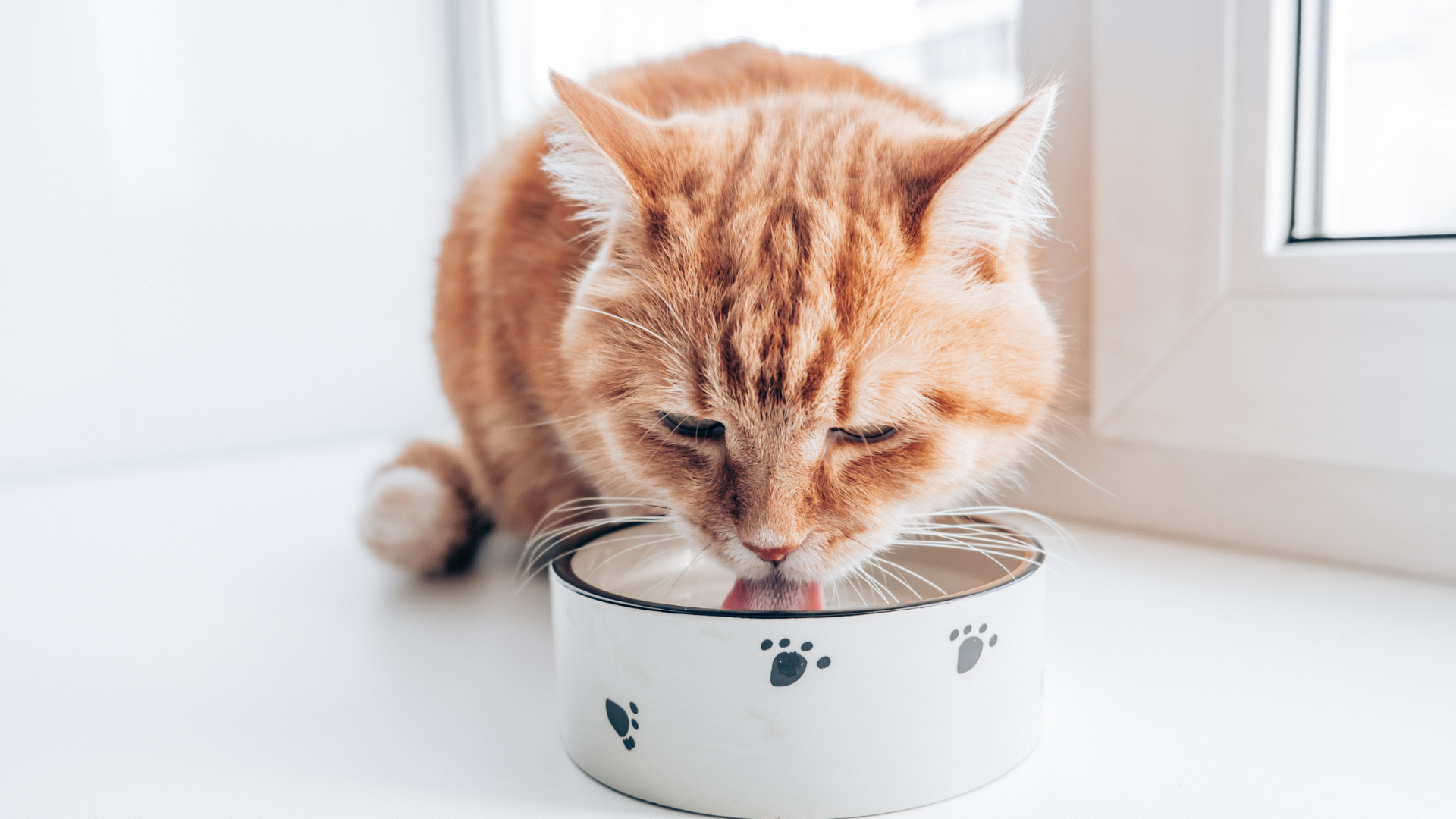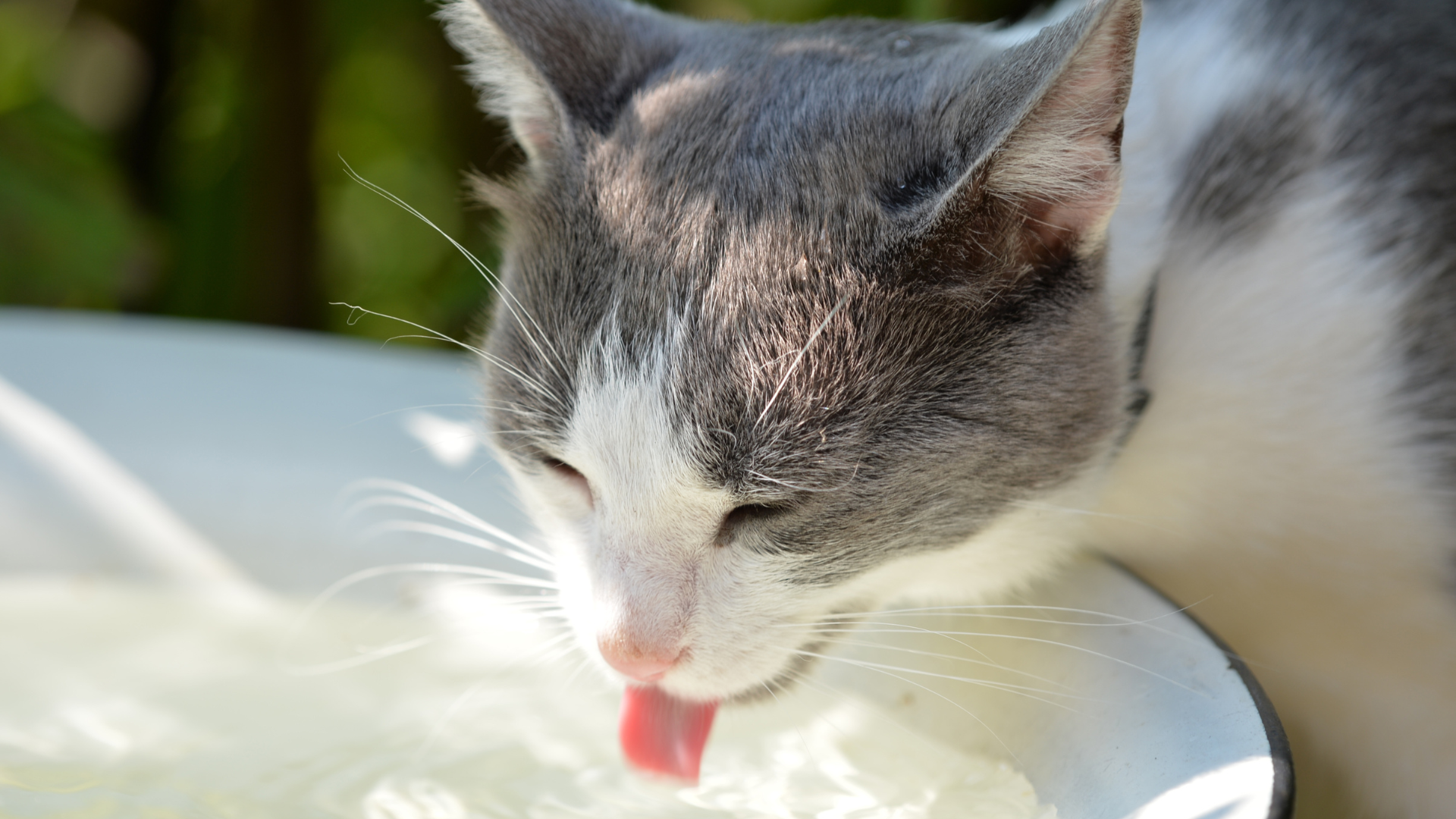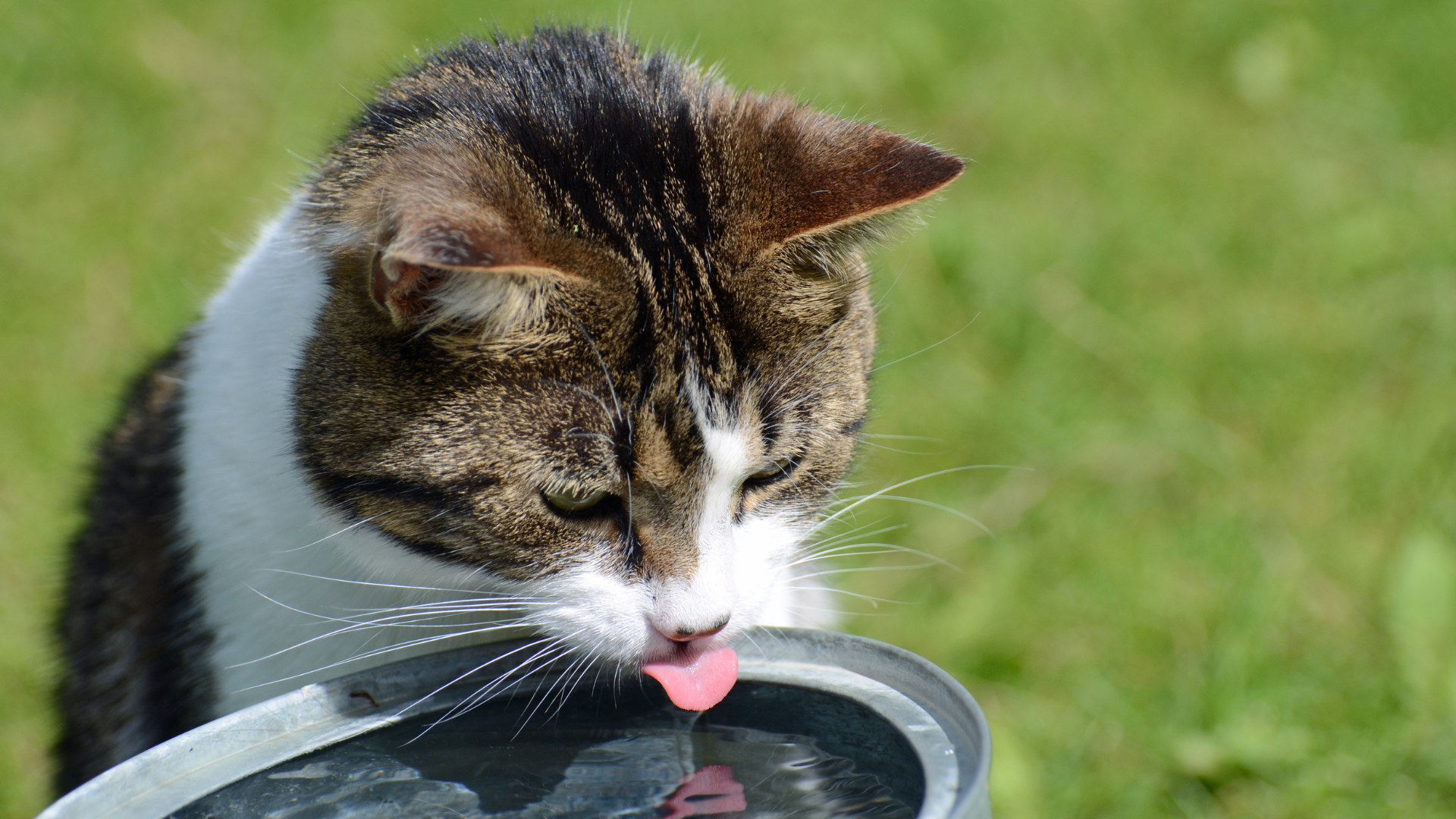
If your cat’s not drinking, you’re bound to be worried. I’ve been working with pet parents for eight years as a vet, including some time in a cat-only practice, which means I’ve seen my fair share of cats with drinking problems. I know just how worrying our fur family can be when they aren’t behaving normally.
In this guide, I’m going to explain the reasons a cat might stop drinking. We’ll also cover cat hydration, and I’ll give you my top tips to help you keep your cats hydrated. (Hint: Using a pet water fountain can help!)
Why is my cat not drinking?
So, let’s first take a look at the reasons your cat is not drinking. The first thing to consider is whether this is a change for them. Cats don’t tend to drink much due to a low thirst drive, and they live fairly private lives – if you’re just not seeing your new cat drink much, this is probably normal for them.
On the whole, we vets worry more about cats drinking a lot than cats not drinking. But if you’ve spotted a sudden decrease in how much your cat is drinking, it can be concerning. Let’s take a look at the reasons your cat might not be drinking below.
1. They’re getting enough water in their diet
If you’ve changed your cat’s food recently, they might be getting enough water from their food, meaning they don’t need to drink as much. This is especially obvious if you’ve changed from the best dry cat food to the best wet cat food, but you might also notice this if the moisture content of their food has increased.
2. They’re getting water elsewhere
Cats are secretive creatures. If your cat goes out and about and/or has free run of the house, it might be that they aren’t drinking less, they’re just drinking from different places. For example, they might have decided they prefer a water glass by the side of the bed, or drinking from a drip tray under a plant pot. Equally, if they go out, next door’s pond or birdfeeder are likely candidates.
3. They feel threatened at their bowl
Sometimes, cats won’t drink if they feel threatened at their water bowl. For example, some cat-cat conflict in a multi-cat house might prevent one cat from being allowed to drink. Alternatively, a cat from outside might be bullying your cat while they drink if the bowl is in view of the window. Try moving the bowl out of sight.
4. Their water bowl is dirty
Cats are known for being fussy about their coat, but they’re also pretty careful about eating and drinking cleanly. This means if their water bowl is getting dirty, they may refuse to drink the water. It’s best to give it a quick clean daily when you replenish the water.

5. Their bowls are too close together
This sounds silly, but cats don’t like their food and water close together. That’s because, in the wild, they wouldn’t want to contaminate their clean water with their kill. If you are placing the food and water bowl together on a mat or in a double bowl, try moving them further apart, or even into different rooms. On that note, they won’t want their water bowl near the best cat litter box either, so try to spread everything around.
6. The water doesn’t taste right
Cats are picky – we know and love them for it. But sometimes it seems like they’re just out to annoy us! If your local water company has changed their cleaning chemicals, your cat might pick up on it. Similarly, if you used to use a water filter or even give them bottled water, they might turn their nose up at a change.
7. The wrong bowl
Yes, if you’ve changed the bowl, you might have to change it back. Cats don’t like change! The type of bowl can make a difference, too - metal bowls can taint the water, making it taste strange and causing cats to stop drinking. Plastic bowls can harbour bacteria, and cause smells that cause cats to stop drinking. Offer several bowls, including glass and ceramic, to try to find something they like.
8. Whisker fatigue
Experts are still undecided whether whisker fatigue is real. But it stands to reason that cats can get fed up of all the information coming from their whiskers, just as humans can get ‘touched out’. If your cat seems face-shy, it might be that their whiskers are causing them problems. Try a shallower, larger bowl that doesn’t cause their whiskers to touch the sides.

How can I encourage my cat to drink water?
Aside from some of the tips given above, there are some other ways you can get your cat to drink water if you think they’re not drinking enough.
The first is to make sure you’ve got enough water bowls out, of various materials and sizes. As you’ll know, cats can be picky. Try to spread the bowls out evenly so cats don’t have to go far to drink. A water fountain is also an excellent addition here, as many cats prefer running water.
Another thing you can do if your cat is not drinking enough is to increase the moisture in their diet. You can do this by adding water to their dry food, switching to a wet diet, or even adding additional water to their wet food.
While flavored waters and water supplements aren’t necessary for most cats, they can be useful if your cat has a health problem that would be improved by increasing their drinking.

How long is it safe for a cat not to drink water?
As explained above, cats naturally get most of their water needs from their food, especially if they’re on a wet diet. As long as they continue to eat a wet diet, they may not even need to drink water at all. But cats who are urinating a lot due to kidney failure or hyperthyroidism, cats who are on a dry diet, or cats who have urinary problems should drink at least some water each day.
If your cat isn’t eating anything or drinking anything, and is therefore taking in no water at all, you should take them to the vet within 24 hours to avoid them getting dehydrated. Dehydration in cats can cause kidney problems and can quickly become fatal.
It’s not always abnormal to see a cat not drinking – they’re private animals with a low thirst drive, so sometimes you won’t see a healthy adult cat drink at all. But if you notice a sudden change in your cat’s drinking, that’s more of a concern. Hopefully, with the reasons above and our tips for encouraging drinking, you can get your cat drinking again, but don’t forget to make an appointment with your vet if you are concerned.
If you liked this article, you might also be interested in the opposite – what to do when a cat is drinking a lot of water. Alternatively, we also have an article about cats not eating.







